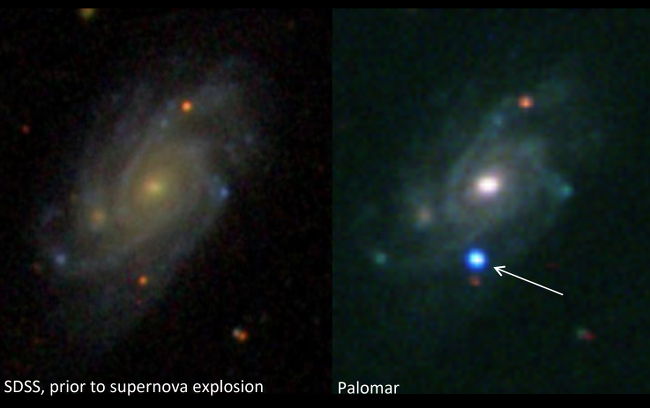| Online: | |
| Visits: | |
| Stories: |
Scientists Capture DEATH STAR in VIOLENT EXPLOSION
Excerpts from theregister.co.uk
Astroboffins have confirmed for the first time that Wolf-Rayet supermassive stars can die in a violent explosion known as a Type IIb supernova, using a global rapid response protocol to capture the moment.
The life and death of stars is an endlessly fascinating subject for astroboffins, since it’s this activity that enriches galaxies with the building blocks for life, but a number of stars and supernovae are still a mystery.
“We are gradually determining which kinds of stars explode, and why, and what kinds of elements they produce,” said Alex Filippenko, Professor of Astronomy at UC Berkeley and co-author of the study. “These elements are crucial to the existence of life. In a very real sense, we are figuring out our own stellar origins.”
“The global rapid response protocol ensures the Sun never rises for the iPTF team,” said team member Mansi Kasliwal of the Carnegie Institution.
When a supernova explodes, its flash ionises the immediate surroundings, helping astronomers to figure out the chemistry of the star that exploded. But the ionisation only lasts for a day before the blast sweeps it away, making it crucial to get telescopes trained on the spot as quickly as possible.
“Newly developed observational capabilities now enable us to study exploding stars in ways we could only dream of before. We are moving towards real-time studies of supernovae,” said iPTF team leader Avishay Gal-Yam, from the Weizmann Institute of Science in Israel.
Supernovas occur when a stars core collapses, sending a shockwave out into space carrying all of the remains and debris. All stars spend their lives fusing hydrogen atoms to create helium, but supermassive ones are different.
If the star becomes more massive, wielding more gravity, that fusion is accelerated in a process that will eventually lead to gravitational collapse. When the hydrogen runs out, a supermassive star can continue to fuse heavier elements like carbon, oxygen and sodium, until its core turns to iron.
At that stage, the only thing holding the star together is quantum mechanical law that stops two electrons from occupying the same quantum state, since fusion is no longer energising the star. Once the core becomes even more massive, even that won’t work anymore and the star collapses.
The Wolf-Rayet phase comes in just before the star goes supernova. As the fusion is slowing down, heavy elements created in the core start rising to the surface, setting off powerful winds, which throw material out into space and hide the star from telescopes on Earth.
The full study, “A Wolf–Rayet-like progenitor of SN 2013cu from spectral observations of a stellar wind”, was published in Nature. ®
Source: http://www.ascensionearth2012.org/2014/05/scientists-capture-death-star-in.html





